Historic Bugattis passing through Algeria
- COCKPIT

- Apr 8, 2024
- 11 min read
Updated: Apr 24, 2024
The Bugatti brand is one of the most prestigious automobile brands and one of the richest in history. It was founded in 1909 by the Italian manufacturer naturalized French Ettore Bugatti, the company has long been considered a pioneer in the field of automobiles and produces luxurious, prestigious sports cars marked by the adage dear to Ettore: “Nothing is is too beautiful, nothing is too expensive. She bases her reputation in particular on her competition victories and also on her own definition of luxury. Each Bugatti is handcrafted and the number of copies is limited for each model, which makes a Bugatti rare and very prized, especially since each of them has a unique story.
We are going to tell you the story of some Bugattis which vibrated the Algerian pavements during the big races in Algeria and which still exist.
BUGATTI TYPE 40 Van
Let's start with an exploit, that of crossing the Sahara in 1929 with a Bugatti Type 40: 11,500 kilometers of unpaved and desert roads.
In 1927, Lieutenant Frédéric Loiseau served in the 4th French Army Corps in North Africa. One day, an acquaintance, who was the director of a bank in Tunis, let him drive his supercharged Bugatti. This is how the idea of an ultra-fast automobile link between the territories administered by France came up. These powerful and light Bugattis were potentially much better for such a task than the heavy Citroën half-tracks, which had crossed the desert in 1924.
Loiseau convinces his superior, the resident general in Tunisia, and goes to Ettore Bugatti in Molsheim. He convinced Bugatti of the usefulness of a 15,000 km expedition across the deserts of North Africa, and on January 25, 1928, Bugatti sent Loiseau a contract, with the conditions of supplying five Type 40 chassis. These would be equipped with a four-cylinder 10 HP engine, lightweight plywood, a "van" type body, but no mudguards, two 130 liter fuel tanks, a fuel tank 20 liter oil with hand pump (like on racing cars), The engine would have a direct exhaust and the cooling system would incorporate a water recovery installation (condenser). Dry weight would be kept below 750 kilograms.
When on January 27, 1929, the convoy of five Bugatti 10 CV Type 40s assembled, and each of the cars carried a load of at least 800 kilograms. About half of them consisted of the participants' personal luggage. Loiseau had expressed his doubts about the overload. He intended to make a record journey from Paris to the Ivory Coast and back.
In the afternoon of January 29, the group arrived in Oran, where it received an official welcome and in the evening, it officially left for Colomb-Béchar, where it had to face the first sand passages which were the first difficulties for overloaded vehicles. But since most of the participants did not want to leave their personal belongings, they bought a truck to join the convoy!
Shipping cars to Oran in Algeria
Loiseau and a second team leave the convoy to go faster. On their way, they meet Renault driver Georges Estienne. He was accompanied by Marshal Franchet d'Esperey who had already crossed the Sahara before with the Estienne brothers. As Estienne, who knows the course well, rode during the day but also during part of the night, his average was not much slower than that of Loiseau and his teammate. The two Bugatti drivers had to stop after sunset.

The other three Bugatti teams progressed at a significantly slower pace. Somewhere near Tanezrouft, the additionally purchased truck – with its load of personal luggage – had to be abandoned due to a technical fault. For Loiseau, this would later prove to be a stroke of luck. On his way home, he came across the abandoned truck and its tank proved to be a welcome “fuel reserve.”
In around five weeks, Loiseau and his Bugatti managed to cover a distance of around 11,500 kilometers and crossed the Sahara twice. Although there were several narrow escapes, Loiseau and his Bugatti survived the Sahara adventure without serious problems. Loiseau had to fight tirelessly against sleep. Once, he fell asleep at the wheel and was replaced by one of his teammates, who immediately fell asleep too! Another time, at a speed of around 100 km/h, he failed to see a small trench and the car jumped over it without accident. Pure luck!
Although the French military never purchased a Bugatti and the proposed rapid automobile connection between French-administered territories in North Africa was never realized, the media coverage and resulting publicity on the crossing of the Sahara by these relatively small Bugattis was very positive for the brand in Molsheim.
The Type 40 Camionnette chassis no. 40811 from the Cité de l’Automobile in Mulhouse considered to be the only surviving example of the five cars modified for Loiseau’s expedition.
In 1930, with the festivities of the Centenary of France's presence in Algeria, a second group of Bugatti Type 40s made a second crossing of the Sahara. The initiative came from the Frenchman Pierre de Brou de Lauriere, who ordered a Bugatti Type 40 produced at the end of 1929 and was delivered in January 1930 to its first owner. At the request of its new owner, the factory did not initially complete the car with a catalog body. Instead, this Type 40 was fitted at the factory with a rudimentary body more appropriate for a utility vehicle with an emphasis on load capacity. The Bugatti T40's engine was a 1500 cc, single-plug, four-cylinder engine.
In March 1930, Pierre de Brou and his wife raced their new Bugatti in the Algiers Rally in North Africa, an event intended to commemorate the long friendship between Algeria and France. However, successfully completing this event was just the beginning of a journey that lasted over a month. After the rally, and in the company of three other Bugatti Type 40s, de Brou and his wife left Algeria and crossed the Sahara Desert at the wheel of their Type 40.

Lieutenant Frédéric Loiseau, who had made a similar crossing of the Sahara in 1929 in a Bugatti Type 40, drove the lead car of this Bugatti expedition. Loiseau took care of most of the infrastructure, such as food, fuel and spare tires, needed to complete the journey. Not only did all four cars complete the crossing, but, after doing so, they all returned to their original starting point by crossing the Sahara again in the opposite direction. It was an incredible testament to the capabilities of the cars and participants and generated a huge amount of publicity for the factory.


Some time after returning to France, de Brou returned to the factory with his Type 40 and exchanged it for a new, larger Type 44. After that, the Bugatti Type 40 offered here had its original Sahara bodywork removed. This bodywork was replaced by the splendid Roadster bodywork which it still has today. However, the exact origin of the new body is not known; it is in the style used on the Bugatti Types 40A and 43A, and it may be a prototype bodywork by Jean Bugatti. Both Ettore and Jean Bugatti were fond of American automobiles, and this style of roadster was originally a popular American design, and it would spend the rest of its career as a racing car in the United States (and elsewhere in the world). the world).
“The Bugatti That Crossed the Sahara,” sold for $464,800, setting a new auction record for the model at the Keno brothers’ inaugural “Rolling Sculpture” sale in New York in 2015
BUGATTI TYPE 35C
1925 Bugatti Type 35C Grand Prix of driver Meyer who took part in the Algerian Grand Prix at Staoueli on May 6, 1928, retiring due to an oil pump problem. His last known victory in the hands of the industrialist was the Tangier hill climb in 1929.
In the photo in Staouéli (Algiers) with number 26.

In 2017, in Monterey California (USA), for its auction where its price reached US$1,155,000
BUGATTI TYPE 51
This Type 51 (chassis # 51128) built in 1931 was first owned by French driver Marcel Lehoux, who debuted it at the Algerian Grand Prix, before finishing sixth in the 1932 Monaco Grand Prix. , then sold it to another French driver, Louis Trintignant, who won several secondary events at his wheel.
Restored, its current value exceeds 5 million euros.
BUGATTI TYPE 59 SPORTS
It is the first of six Type 59 Sports racing cars, produced in the 1930s, which still exists today in its almost original form and is considered a valuable witness to Bugatti's successes in the history of motor racing. .
Affectionately nicknamed “The Grandmother” by the mechanics of Molsheim, this sports car took part in several races in Africa and won the last edition of the Algerian Grand Prix.
Fast and ingenious, this Bugatti caused a sensation in the industry. At the end of the season, this exceptional car with numerous victories was purchased by a loyal Bugatti customer with a fine racing record: Leopold III, King of Belgium from 1934 to 1951.
Exclusively for him, Ettore Bugatti had the car, until then blue, repainted in the king's favorite color, black, and had it adorned with yellow stripes reminiscent of the racing colors of Belgium. What the king did with this powerful sports car in the years that followed remains a mystery.
In 1967, the former king sold it to a Belgian collector who kept it for around twenty years, without repolishing or restoring it. In 1989, this historic racing car passed into the hands of an American Bugatti enthusiast who also kept it in its original condition, carrying out only basic maintenance.
More than 80 years old, this precious witness to the history of Bugatti with its fine racing record is today in the hands of an enthusiast who recently had this exceptional patina restored, marking a historic turning point in the automotive world. The paintings, still well preserved but already patinated, were, so to speak, sealed while the most damaged areas were only the subject of delicate repairs. What's left: worn leather seats and scars in the wooden steering wheel.
BUGATTI TYPE 59 STELVIO
The Stelvio model is one of three creations from the factory's design office, which in 1934 offered a unique range of four-seater vehicles in the form of a four-door Galibier sedan, a Ventoux coach with two-door and a two-door Stelvio convertible.
This Type 29 Stelvio example bears the number 57109/11, i.e. engine chassis no. 11 of the Type 57. Its factory invoice was issued on March 29, 1934 on behalf of the Bugatti agent in Algiers, M. Sagnier, for 58,265 ff. This is the second Bugatti Type 57 Stelvio produced!
Transported by road to Marseille when it leaves the factory, it is shipped by boat to Algiers where it will be sold. Returned to France after the Second World War.
Exhibited at the 2nd Algiers Fair in 1934
This convertible 57109/11 shipped to the Algerian coast on March 30, 1934, and is eagerly awaited by the Bugatti Sagnier dealership in Algiers, since it will be exhibited at the Automobile Show which will be held during the 2nd Algiers Fair from March 24 to April 9, 1934.
The Sagnier garage, located at 58-60 rue Michelet in Algiers, was founded in March 1914. It is a Cottin-Desgouttes, Bugatti, then Talbot dealership.
Photos from the Bugatti-Talbot stand of the Sagnier company show the 57 Stelvio convertible with red rims lacquered in black, two-tone bodywork, tabs covering the rear wheels and probably red and black with a white cotton hood. This convertible with engine no. 11 is equipped with a single-leaf bumper in the shape of a bracket, unlike the first convertible, engine no. 6, which came out of the bodywork on January 24, 1934, and which was used by Friderich in Morocco rally in April, equipped with a central headlight and a bumper with two horizontal leaves.
We could read in the article in the weekly “L’Afrique du Nord Illustrée” of April 14, 1934:
“The great manufacturer from Molsheim, of which Etales Sagnier is a dealer, is exhibiting a magnificent convertible on a 300 300 touring car chassis with 19 hp and double camshaft, a mechanical marvel. With its latest model, the performance achieved in Monthléry, with an average of 152 km 700, was achieved with the type of car delivered to customers.
It seems that this first Bugatti 57 sold on Algerian soil was used by Sagnier himself, and we do not know the name of the first Algerian owner, but it was possible to identify the original registration plate: 5033 AL 13.
A second Stelvio cabriolet, chassis 57129, was sent by Robert Aumaitre to Marseille at the beginning of November 1934 for the driver Soulié, a client of Sagnier, and was invoiced 58,784 ff. This car was equipped with flange wheels. A third 57 convertible, manufactured by Gangloff in 1937 for a client from Tipaza who kept it until 1950.
Second life in New Aquitaine and on the banks of the Loire.
BUGATTI TYPE 55 Roadster
We finish our selection with one of the most emblematic Bugattis in the history of the Bugatti brand.
This Bugatti Type 55 Roadster was completed in March 1933 and was equipped with engine number 32. It is one of three cars of this type with Jean Bugatti roadster body completed in 1933.
The car was invoiced to Henri M. Sagnier on March 21, 1933, Bugatti's official agent in Algiers, Algeria. The next day, the Bugatti was sent by train to Marseille, France, en route to North Africa. Shortly after its arrival, the Bugatti was exhibited on Mr. Sagnier's Bugatti and Talbot stand at the first Foire d'Algiers, a large national fair held in Algiers from April 10 to 23, 1933.
Juvénal Emile Jarron was the first private owner of the car. In March 1935, Valentin, son of Mr. Sagnier, entered Mr. Jarron's Type 55 in the Bouzaréa hill climb, where he came first. The Bugatti achieved the best time in all categories and won the Guy Moll Challenge prize. In December 1936, Valentin Sagnier entered the Bugatti in the next Bouzaréa hill climb. Due to a fatal accident during practice, the race was canceled before the start.

The car was kept by Mr. Jarron until the end of 1937, when he replaced it with a new Type 57S Vanvoor Cabriolet. At this time, the Type 55 Roadster returned to the Sagnier garage to be sold to a new owner. From there, the Bugatti is believed to have belonged to a succession of local owners in the late 1930s, remaining in Algeria throughout the Second World War.
Towards the end of the war, the Bugatti was requisitioned by armistice army observers, who mounted the Type 55's engine in an outboard and installed a diesel engine in its place.

After the war, the definitive history of its ownership dates back to the first registration “714 AL 16”. Alexis Post, a Swiss mechanic, owned it in 1951 and, under his direction, managed to reunite 55231 with its original engine, but the Bugatti remained dormant until December 1957, when it was sold to Bernard Viallon. Over the next two years, Mr. Viallon returned the Type 55 to service, carrying out much of the work himself. Many missing or broken parts were obtained directly from the Bugatti factory in Molsheim. Work was completed in the summer of 1959 and was run until its engine failed in May 1960. It was then mounted on blocks at the family home, Villa Mathilde in Blida, Algeria.
In February 1963, the Bugatti returned to France and was stored with a friend in Clamecy for around ten years before joining its owner in Lyon. In March 1986, Guy Huet bought the Bugatti on behalf of the American fashion designer Ralph Launch. Restoration work on the vehicle had progressed, but at the time of purchase it was not completed.

The car was sent to Crosthwaite & Gardiner in England, where it was fully restored and repainted black with dark blue coves. Once the work was completed, the car was exhibited at Villa d'Este and Pebble Beach, participated in the Bugatti International Meeting in Italy and was even displayed on the Bugatti stand at the 2007 Geneva International Motor Show.
Having later belonged to Henri Chambon, the Type 55 was repainted in its original black and yellow colors.
This Bugatti Type 55 is believed to retain its original chassis, rear end, engine, gearbox and body (without hood, which was replaced during Viallon's ownership).
This Jean Bugatti Roadster is believed to be the only Type 55 that served as both an automobile exhibition and competition car at the time.

Bugatti Type 55 Roadster from 1933 (estimate: US$8,000,000 - US$10,000,000)
Technical specifications :
2,262 cc DOHC inline 8-cylinder engine
Zenith 48K single carburetor
Roots-type supercharger
130 hp at 5,000 rpm
4-speed manual transmission
4-wheel mechanical drum brakes
Solid axle front suspension with semi-elliptical leaf springs
Rear solid axle with inverted quarter-elliptical leaf springs










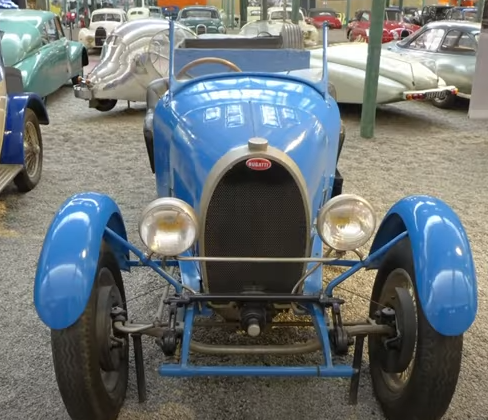



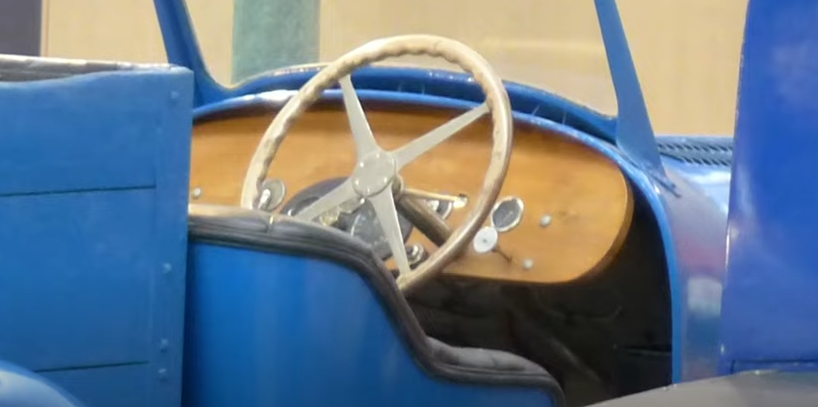







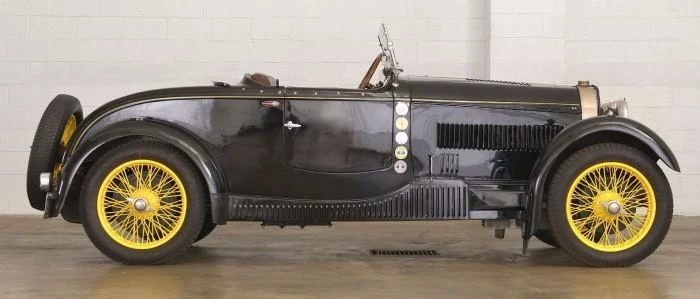
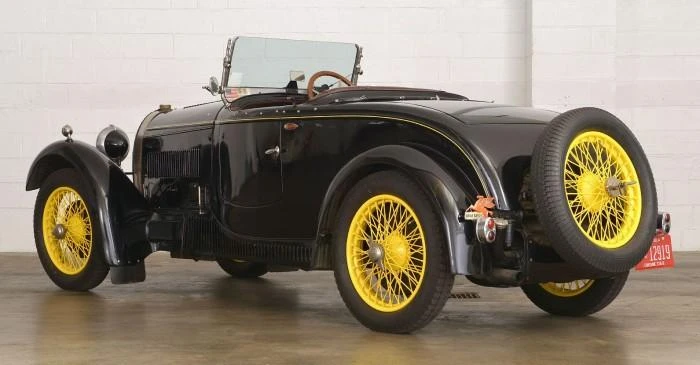
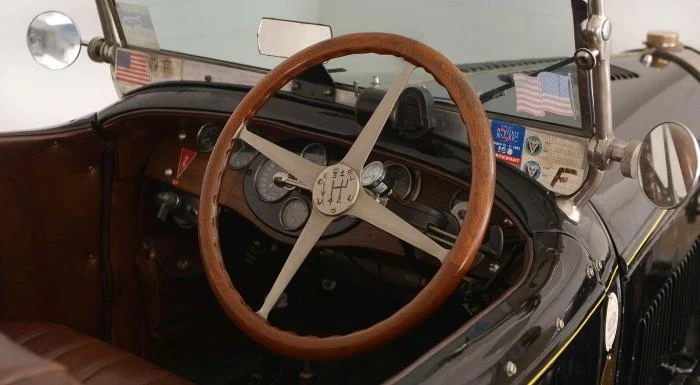
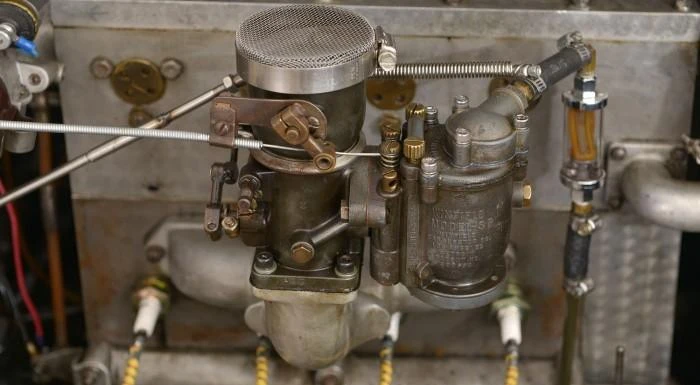
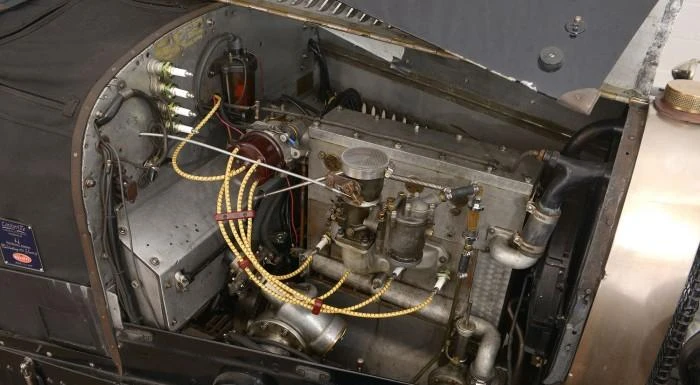











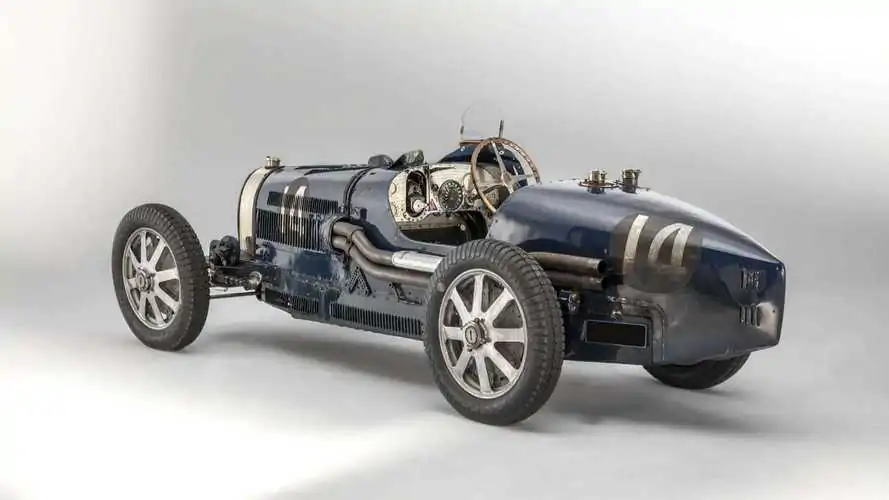
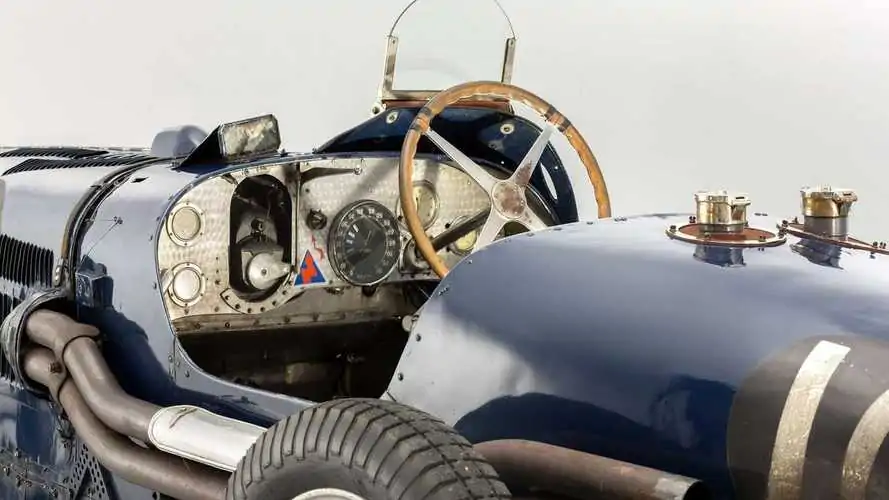
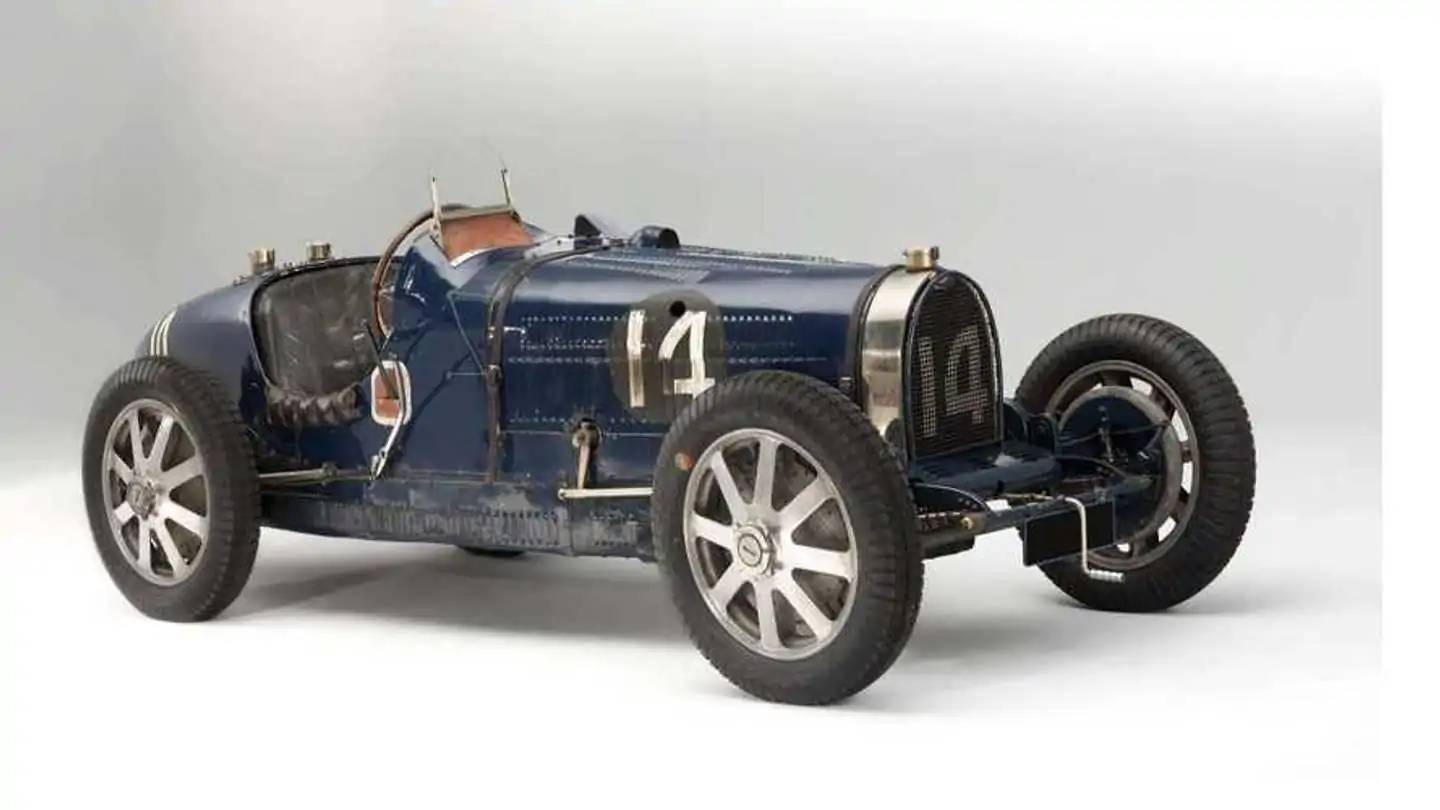





































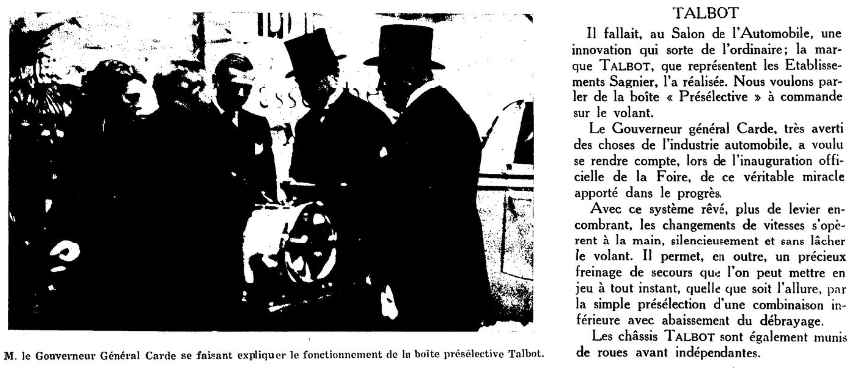





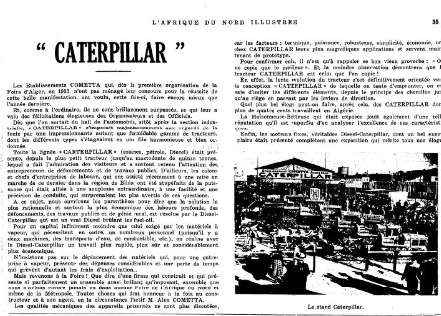


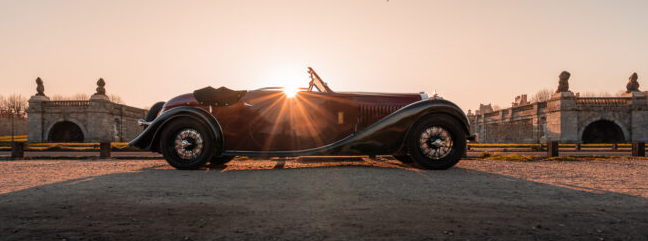













































Comments